Further observations about physics – split files
(03) Now that leads on to another conjecture.
Where exactly is the universal mean? – the ultimate 1 value that would be indivisible and come in strict quanta. I have already suggested that inside the atom that there is an R/mean to mean/R inversion. Depending on your perspective, the one inside your atom is the 1/R (or mean/R) "universe". We need to think which has primacy – time or space. Is time a product of dimensional winding or is dimensional winding a product of time. Now, short (or even long term) borrowing is the basis of the generation of quantum foam. Spatial extent (1-D to 3-D) may simply be a product of how long the spatial extent has in which to bubble out. The vast majority are very short term loans that can occur in either the T/mean or the mean/T directions.
It is often said that our universe may contain positive and negative energy. We need to remember the close association of energy with an improbably concentrated distribution. Remember that entropy involves (perpetual?) change and that this leads away from concentration towards dispersion and results in both macro- and micro-scopic homogenisation. Gravity, on the other hand, leads from dispersion and initial homogenisation to concentration (or a progressive condensation into multi-D). In this respect, it is a manifestation of an entropy with the opposite polarity to the entropy (an arrow of time) that we usually acknowledge. The other point – which I read recently – is that energy has no direction. Now this might not be "true". Energy wanting to return to the mean by dispersing into deep intergalactic space (ultimately, infra-red photons) has a direction which is away from the nucleus. If we invert this, we have energy that wants to return to the mean in a direction pointing into the nucleus (what we regard as gravity). However, once across the mean, the perspective immediately inverts. So, could the mean actually be the size of the electron shell? Anything that looks (to us) to be smaller that that is actually through the mean and heading off into the mean/R "universe" (but it will see the situation inverted). The electron shell – being right on the mean – will be subject to a torrential creation/annihilation of time borrows that are very close to the mean. Although it might look like one electron, it is in a state of perpetual swapping or virtual for real. This creates, effectively, a Faraday cage "within" which there is no net electric field. Any charge within it can occuy any spot in the "enclosed" sphere. Since the radius is the mean (the 1 of the R/1 and 1/R "universes") the charge density at any one point of the electron shell is charge divided by 4πr2. The charge density inside this sphere is charge divided by 4/3πr3 OR, rearranging, 3 charges divided by 4πr3. Since the radius in both instances is one, in this instance r2 = r3. So we need 3 (fundamental) quantal charges inside the "Faraday" cage to balance one fundamental quantal charge around the surface of this cage. The actual charge inside is perfectly balanced with the outside charge. Of course, the perspective is inverted from the other side. Now, this is tortuous and quite likely nonsense but – perhaps – just maybe? If we think of this perspective inversion occurring around the mean "plane" that cuts through the torus mentioned earlier, matter will form in the torrent of created/annihilated quantum foam temporally close to this plane. Rather than time being some illusion of distance, distance may actually be some illusion of time (about the mean in a T/mean and mean/T pattern around a virtual point of zero time).
Following on from the earlier videos of how our universe may be "formed" in torus fashion, this video highlights what I think is a wrong interpretation. Watching this video we see the galaxies being spewed out of the funnel of the torus, cycling around the periphery and then being swallowed up on the opposite side. However, these largest "strings" are the "opening" out of (deep intergalactic) space and are the place where true annihilation of energy can occur (the repayment of borrowed energy/time) – the zero energy point. All that exists here is the uncertainty that spawns quantum foam and the occasional persisters that form stable fempto-capacitors that emerge into stable atoms (like the diesel + oxygen analogy of two closed entropic systems) and then more complex matter. We (in the spiral arm of our galaxy) are well into the neck of this funnel and will never emerge (as intact molecules) from this. This is our existential standing wave condition. If we imagine a contra rotating flow of photons or other waves, outward from the neck of our funnel and inward from the periphery of the torus, then we are probably persistent, standing waves that are forced into a morphostatic technique to maintain order (even though that order is constantly under attack by the relentless fempto-scopic jitteriness imposed by entropy). From the perspective of the inward (photonic?) waves from deep intergalactic space, we are accelerating out at nearly the speed of light (hence light always "travels" at the speed of light). The "bending" of light by the sun's gravity can be, equally, explained as the accelerating expansion of the earth during that interval that light takes to travel from beside the sun to the earth. Gravity, then, by this perspective, is not an attractive force but the literal (from a photon's perspective) expanding invasion of the photon's space by matter.
Here is yet another view that may help in appreciating possibilities.
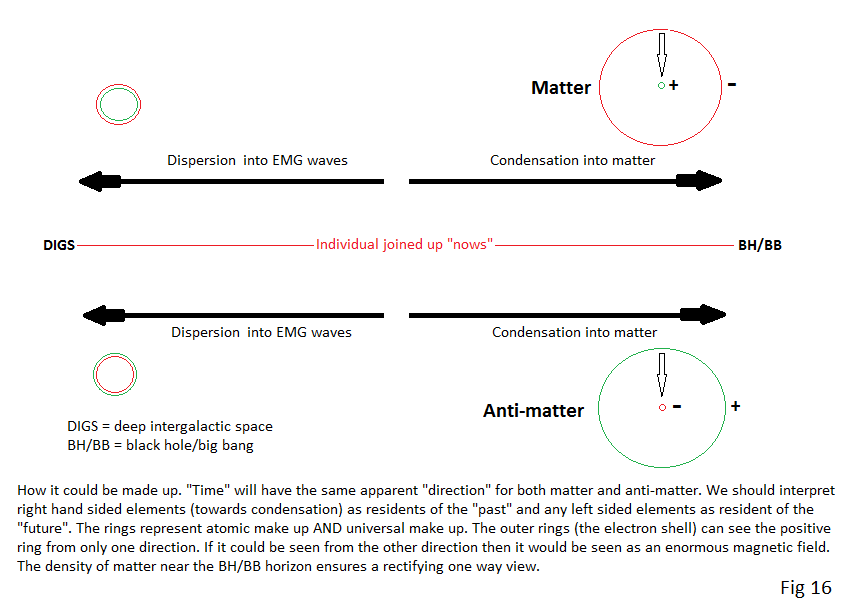
The density of condensation (from one partner's view to the other – and that will invert across the "now" membrane) ensures a one way travel of electromagnetic waves. We should not be able to see anything (photonically) "shining" out from the nuclear "virtual singularity". The "wind" of fairly "equal" spatial-sphere-pairs (4 standard deviations around 10,000 to 1) should vastly outnumber the rarer unequal spatial-sphere-pairs. They are not unequal in probability (and thus energy). Because rarer pairs are much more "energetic" (far more improbable) this imbalance of mutual perspective grows and the now barrier gets more extreme.
If we go back to the idea that there is a perspective change at the top of the double escalators (or centre of the travelators) it is important to look at what is happening as we "travel" through the mean (where the perspective inversion should occur). Think of an atom and what will happen to perspective as we "travel" into it. We start off – on our matter side – with the large magnetic field ("string") on the outside and the small (electron?) string on the inside. The moment we look from the perspective of the "inside" of the electron sphere the perspective inverts and the small string becomes the large magnetic field and the large magnetic field becomes the small string. Matter changes into anti-matter BUT the wind of quasi-equal pairs that are being created and annihilated between the two may have an influence on keeping the just-in-the-past elements and the just-in-the-future elements apart and prevent them from annihilating.
Here is another set of thoughts: if we strip away all but the largest (and its reciprocal, smallest, dumbbell-pair partner) it might be possible to get a clearer view of what is happening. For the moment, assume these "add-up-to-nothing" dumbbell pairs act like pure sine waves (remember the analogy with the opposing faces of dice that can always add up to zero – in the entropy section). As the spatial "dumbbells" oscillate through the mean there will be a maximum amplitude (biggest vs smallest – but that perspective changes through the mean so the smallest appears to suddenly "inflate", through the mean, into the biggest: and vice versa). At the maximum amplitude, on each side, all that particular side's "motion" is converted to potential energy. As we approach the mean (minimum amplitude), all the potential energy is converted into kinetic energy (just like pendular or spring-like oscillations). So that means that the the largest oscillation sets the maximum "speed" through the mean (the SoL?). Now lets add a few smaller, component oscillators and imagine them as springs that can stretch enormously (to almost straight) then contract back to coiled and – one further point – all the coils can pass unobstructed by their own rings through the mean so that the spring "inverts". So we now have springs that unwind into maximum tension at the largest amplitude of oscillating (maximal) space and concertina (wind up) at the smallest (the mean). Now the whole process can be vastly complicated by adding in a myriad subsidiary extra "springs" that become the fabric of the standing waves of our (visible/tangible) cosmos. This means that – if the standing waves are "built" close to the mean – matter is represented in that portion of the largest amplitude sine wave that is, at that point, all kinetic and little potential energy: it is "travelling" at the maximum velocity. Space is contracting at its maximal velocity and we – on earth – are standing "still" by virtue of our rotational acceleration (spiral arm, planetary). Now, we know from Einstein's relativity that, if something is moving to or away from you at the speed of light, we perceive that it becomes shortened and its time slows to a standstill. If the acceleration is into the mean, contraction to electron shell size and then expansion out the other side of the sine wave, then it is contracting at the speed of light in all three dimensions. So, not only is it shortening in one direction, it is contracting in all three – become increasingly point like. We also know, from Einstein, that the question of who's time and dimensions are shortening depends on which perspective you take (which "space ship" you happen to be travelling in) and this shortening only becomes "real" if one side moves suddenly into the others domain (eg, muons slamming into the earth).
One inevitable conclusion to all this is that time will appear to be very different on the two sides. On "our side" there appears to be one single maximal (age of the universe or more) dumbbell expansion. But we can "see" or "feel" the influence of the other side and this appears to consist of countless minimal spatial oscillations – not just one. This perspective is reversed on the other side. So, here is an early feel for "multiverses" and the first indication that this dumbell structure could be the generator of a Darwinian style emergence of persistent matter. We can also imagine that, with countless subsidiary spatial-dumbell-pairs, there is the potential for a maelstrom of turbulent chaos near the mean and a bland sameness and calm at the periphery. Also, the tension – like surface tension – is around the spatial expansion which results in a net force towards the (electron shell) mean. A question that remains is how we end up with a 3-D universe rather than a 2-D universe but that may be part of the emergence or it requires expanding the dimensions to three from the 2-D surface of a time/distance sphere (as in the diagram above). Remember, the oscillations are NOT forward in time but back and forth in time. The stable emergence occurs in mirror image fashion either side of the mean (one "forward" and one "backward" in time – or should I say one "forward" and one "backward" in entropy direction).
VERY preliminary thoughts (here to the end): All this implies that the mean needs to be a geometric mean – not an arithmetic mean. The geometric mean of two numbers, say 10+35 and 10-35, is the square root of (10+35 x 10-35) which is 100 or, put more simply, 1 (this range was chosen to be around the universe's ball park). Don't forget that anything below 100 and continuing to as low as 10-35 would "see" things inverted – it would perceive there to be "expansion" not "contraction" in going from 100 to 10-35. There are a number of good reasons why it should be a geometric mean. There is no value of zero in the range (there is very big and very small but no zero value and the inversion dictates that there is a minimum size). Energy is an improbably concentrated distribution of values that are at least several standard distributions outside the mean. Energy in kinetic form is represented by 1/2mv2 and in mass form by mc2 (Einstein). The potential form of the energy of an object which is at "infinity" from a gravitationally attractive body is equal to the kinetic energy it accumulates in moving from "infinity" to the attractor. In book by Brian Cox and Jeff Foreshaw (pp 74-101 – it's a useful place to be introduced to the concept), they establish the relationship between time and space (distance) but take its square root. However, if it represents energy then it is possibly better to leave the equations in the squared state. This leads to their diagram where there is a no-go area (Minkowski space) of energy transfer set around a virtual point (values are always shy of this virtual point). These observations point towards a unitary minimum when values either side of the mean never drop below "one unit" but simply invert by their power of ten becoming its reciprocal (so the range 10+35 to 10-35 becomes, at transition, 10-35 to 10+35 and the perspective of who's power is inverted depends upon which side of the mean you view it from. Interestingly, that puts a slightly different perspective on the role of the imaginary number √(-1), usually called "i", which turns up in electrical calculations of capacitor/inductor circuits (where the convention is to call it "j" rather than "i"). This may only be real (and meaningful) if we consider it as a manifestation of a transition from "positive" to "negative" energy; it might be that it is our conviction that we need to reduce it to its "roots" that may be the imaginary entity rather than the imaginary number "j" itself. And all this may, anyway, be a reflection of statistical variance which is also calculated with squared values. Pythagorus gives us
(adjacent)2 + (opposite)2 = (hypotenuse)2
or
x2 + y2 = z2
and that can be rearranged into
y2 = z2 – x2
Which is the form of their equation and that might challenge which value represents the "true" hypotenuse. (Note that if we misinterpret the true hypotenuse then we are left dealing with "i", the square root of minus 1.) The "distance" between two "events" may actually need to "adjust" to this inversion across the mean. Time is, arguably, the direct outcome of the inversion of distance into time across the mean – as we go from external to internal space. So time is a direct function of 1/distance once we cross the mean. The earlier analogy of balanced "dice" face pairs suggests energy is created in matched pairs or positive and negative energy amplitude across the inner and outer atomic space (inner and outer depending on "your" perspective). Photons are likely to be made up of a balanced pair that oscillates around the mean. Both maximal amplitudes (inner and outer space) can be measured in terms of either time or distance
c/t or simply d
since, when using a laser-distance-measuring-device,
d = c/t
So, (external space) = (internal space)-1 for these matched, net zero energy, pairs. And it is arguable that time is directly proportional to the reciprocal of distance. As the local concentration of internal space in external space increases (gathering into planets, suns, black holes), so the mass action effect of proximal internal space is progressively interpreted by us as a slowing of time (and, for that matter, mass).
So, the diagram on page of the Cox/Foreshaw book is starting to look very much like the double asymptote diagram (above) but rotated through 45 degrees. If we call the left hand side N(orth), the right S, the top E and the bottom W, I wonder if the N to S axis is across the central funnel of the torus (above) and the "intrusions" of the E and W curves might just possibly result in reflection by extreme refraction. That could satisfy the outcome of a no-go area in the centre. This is hyper conjectural. Looped strings of spatial expansion, which become charged, may become what we interpret as electrons and positrons when "seen" from the mean/R perspective (this reciprocal perspective would explain why they appear far smaller than the electron shell).
So, let's return to the idea that the past can be just a millimetre away and yet, in effort distance, it might as well be on the other side of the universe. As we dive through the R/mean into the mean/R point, this represents a funnel – like the wormhole diagram above. The funnel diameter is set – in this scheme – to be at around (if not actually) the diameter of an electron cloud around an atom. In our matter universe (we see it as an R/mean construction) the direction of time is set by the highly improbable compaction of matter to the very probable homogenisation to fill all our universe's space (the large majority deep intergalactic space). I'll call our side the North side and the anti-universe "reflection" the South side and that is probably in keeping with the "magnetic" field that the "surface tension" of expanding outer and contracting inner space produces through becoming "electrically" charged (or we can call it expanding North space and, by its perspective, expanding South space – or explained more fully – the matter side sees expanding North space and contracting South space and the South side expanding South space and contracting North space). An electron will be our view of expanding South space. So, on the North side, the direction of entropy is forward in our time whilst on the South side, the direction of entropy is in the opposite direction. North is now to future; South is now to past. It is like an very small ring is moving along a pair of figure of eight looped strings (which add up to nothing and oscillate North to South and vice versa), but there are miriads of these string loops and and miriad constriction points. But the constriction points are "converging" on (or subtended back towards) a virtual "point". All time is probably produced by an oscillation of spatial R/mean + mean/R pairs. Sustained 1900 to 2000 time is a manifestation of the apparent slowness of our outer space (North space) oscillation. This may be an illusion of our counter acceleration (mostly by rotation) just "above" the sine wave crossover, where the energy of the wave is kinetic rather than potential. The South side, of course, will lie just "below" the opposite side of the crossover. Could we be getting an outer space view of oscillation that is end on, like looking at a spring from one end when it will look just like a circle? The North's view of the South would be a tiny oscillation strung out across contracting space and so will look like an oscillating wave rather than a static (but oscillating) mean/R spatial incursion. Now we can envision a scenario where quantum foam is generated across the disc that separates North from South in the torus (we may have to view it as 4-D with our 3-D conceptualisation adapted for a paper representation – like the earlier diagram of an expanding spatial sphere around a time radius). I suspect this 4th dimension might be "ironed" out by reconsidering the effect of the R/mean to mean/R inversion and the fact that it is a geometric, not an arithmetic mean. The time radius may simply reflect the fact that one of our dimensions is trading R/mean for mean/R directionality (or two are trading it and one not – think thru). This is why galaxy discs, where there is substantial rotation, tend to be flat. (The fatter galaxies or parts of them might have lower rotational energy?) This end-on-view of the "spring" could mean that the North's view of outer space will perceive very few oscillations whilst it will perceive countless oscillations in its view of inner space which is the North's view of the South side.
Wikipedia's article on Minkowski space has this diagram.
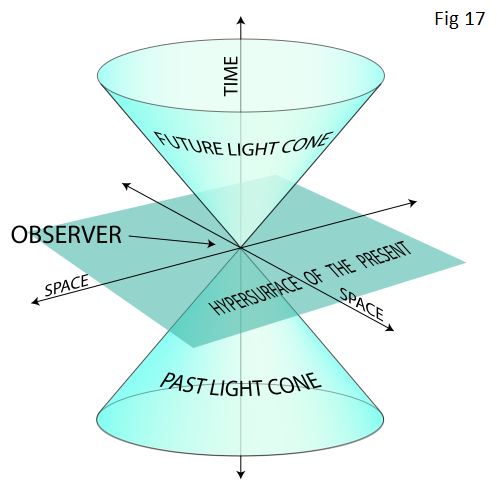
Now, this is looking pretty much similar to some of the points made above. One important point about slipping through from the matter to antimatter state (electron charge outside the atom = matter and positron charge outside the atom = antimatter) is that the direction of entropy flips immediately. In both universes, photons dissipate energy throughout space (the vast majority going to deep intergalactic space because that is the overwhelmingly dominant state). Remember these cones only represent two of the three spatial dimensions (not just the two that this simplified diagram presents). Logic would suggest that these two expanding footballs ultimately expand until at maximum amplitude, the upward and downward entropy flows merge together in deep intergalactic space. Matter can only persist where rotational acceleration exactly counterbalances the natural accelerating collapse of space towards atoms, planets, stars, galactic centres and by Einsteinian definition it is in this matter state because it is accelerating at close to the speed of light (remember the sine wave thing – virtual no momentum at maximum amplitude of spatial expansion and virtually no amplitude at maximum momentum of spatial collapse. So, it remains very close to the mean (sine wave energy above the mean is exactly equal to that below; it adds up to zero).
Every atom is a tiny window into half the energy of the universe, and it feels its influence. The more compact we pack atoms, the greater the mass action effect of the accumulating windows into the other half of the universe (across the torus). Although the mean/R perspective would see vast universal distances, we only perceive the "anti"verse (or the South Universe) by its influence exerted through the tunnel of one or very many more electron; and it apears to be tinier than an atom. So gravity IS the effect of reversing entropy. We experience it because it is pack up inside an atom. And when there are many atoms packed close together, its influence grows massively. Effectively, the insides of an atoms are trying to evaporate away towards deep intergalactic space on the mean/R universe.
The graphs below highlight points about this Minkowski space – that bit around the tips of the two cones. If it were possible to have a zero value at the cone tip ±[√(x2+0)] then there would not be any "no-go" areas and no big barrier to the immediate past. (Needs thinking thru.)
Remember, the contention is that an "inhabitant" of the "North-side" of the torus sees the "South-side" in a mean/R configuration. On the other hand, an "inhabitant" of the "South-side" of the torus sees the "North-side" to be in the mean/R configuration.
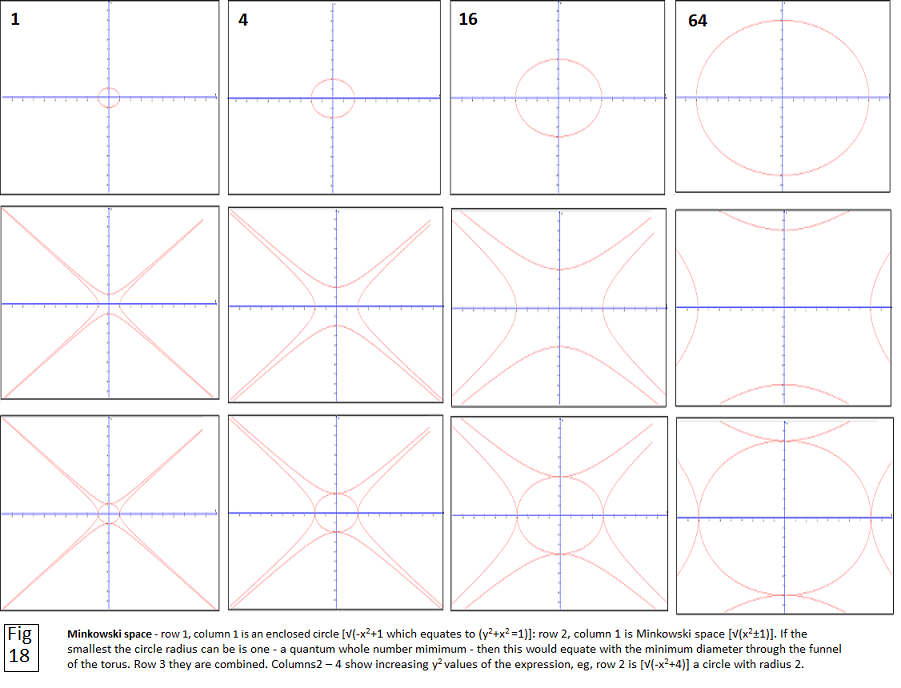
A conundrum to resolve is how these two sides swap over – or do they bounce/reflect? Is it a form of quantum tunnelling? The crossover is a problem. How does the R/mean to mean/R take place and over what "distance" or "sphere of influence"? How does the sudden change to 1/3rds get explained away with the appearance of quarks "on the other side" (I have already suggested a high degree of symmetry that this ugly fact leaves looking "awkward"). The answer – probably – is that there is no crossover, just spherical contraction then expansion about the "now" point. If the idea proves well founded, that it is some sort of surface tension that leads to electrical charge, then this suggests that the multidimensional dance that begets "matter" is taking place by intereactions of the surfaces of multiple expanding contracting spatial "spheres". Then, the importance of the circles within the Minkowski space (bottom row) gains extra significance. Perhaps matter standing waves "bounce" at the electron shell boundary between "positive-North-entropy" and "negative-South-entropy". It is already "deemed" that a neutron is – effectively – a proton in combination with an electron so the extension to quarks and positrons seems natural – but how? One further observation is this: the R/mean to mean/R transition may act rather (but not exactly) like a right angle. As we approach on the R/mean side, we get closer then suddenly no closer but progressively further away – which is rather like what happens as we approach the "opposite" from the "adjacent" side of a triangle. So that might influence the maths.
De-Sitter spacetime is an extension of Minkowski spacetime where there is no "fall" to an infinitesimal singularity. These diagrams (below) are taken from this paper and show how two spheres "interconnect". However, it is important to remember that these are 2-D representations (expanding "cone") of a 3-D universe. The upper and lower poles are "occurring" in the same space but their entropies are reversed top to bottom. It is only at large distances from the "funnel" that the two entropies become saturated and, thus, easily miscible. The points just above and just below the funnel are an immense "effort-distance" apart and therefore do not – at this proximity – homogenise back to nihil/zilch. (First diagram De-Sitter space, second Hyperbolic space.)
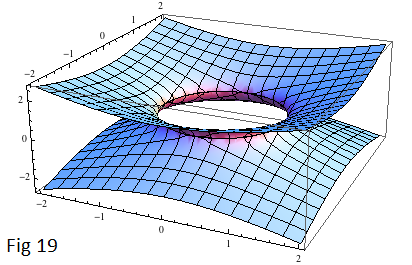
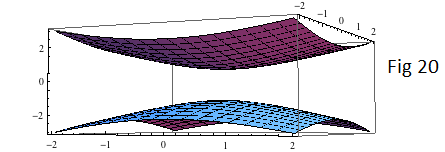
This is rather nice, because, we can imagine dropping a coin into one of those vortices that collect money for charity. This is rather like what may happen in an electron shell. At the periphery, not much holds up the travel towards the hole. Indeed, if the travel to the hole is "perpendicular", it (a photonic wave) goes straight in. But any degree of deviance from the perpendicular will amplify as the hole is approached and it will hold up the coin's disappearance. This might be exactly equivalent to what is happening as atoms are formed and what gives them "persistence". The top sphere and bottom sphere are, effectively, superimposed but their opposite entropies prevent annihilation occurring at this place.
I have added a link to a new figure here on prime numbers. Primes are, by definition, are fundamental and non-harmonic. They can be part of a harmonic if in multiple instances (eg, 13+13 = 26) but are fundamental on their own. Quantum physics seems to suggest a pervasive exclusion principle that suggests that the population of new "possibilities" is restricted to unique components. When we graph the distribution of intervals between successive primes we end up with a histogram that is very reminiscent of a Minkowski like distribution.
The following perspective might have some value: if this view of a "mean" set about the "diameter" of an inner electron shell proves correct, then it offers a fresh view. You have possibly seen, even looked through, those multiple pinhole focusers that ophthalmologists and hospital ophthalmic departments use. Well, this may well prove a useful analogy that helps us to look through a "now membrane" to escape the straightjacket of time. Every atom is like a pinhole allowing us to "see" through from the North side of the torus to the Southside. It may act like a diffraction grating with the wave functions of either side instantly able to interact with each other, through the tunnel. On emergence from the tunnel (on either side) the wavefunction can then resume its expanding wave front as it spreads out into deep intergalactic space. We need to adapt the analogy to encompass the idea that these pinholes emerge, like wormholes, through multiple locations in both "time" and space. I think there is possibly some value in this analogy, particularly in perceiving how we can get an apparent right angle from the R/mean to mean/R transition and why the perspective is inverted either side of the mean (R/mean becomes mean/R and vice versa).
So, we could have a situation where baryonic matter and baryonic anti-matter are separated by "effort distance" (effectively similar to spacetime) but not by "distance" (remember, the past can be femptometres away but "a universe of effort" apart). To bring some analogy to this, think of a mirrored, spiky surface covering the inner "substance" of a sphere. Or, alternatively, a combined real and mirrored image of coniferous trees in a lake. The lake surface represents the surface of a (merged – see Entropy and this section) big bang/black hole singularity. At the tips of the tree branches, with their pine "needles", are the countless individual atoms. (The tips of the spikes on the ball represent a point where a mirror image of the ball is occupied by the same point at its centre but now the reflection is like a ghosted superposition of similarly shaped spikes in the same place but at opposite "time" poles – or "entropy poles".) Each electron shell of the countless atoms, are approached and exited at the SoL, and can – once inside the substance of the tree (spike ball) and its reflection – slip to the opposite (reflected) side (virtually?) instantaneously. So, whenever we are measuring/assessing the SoL we are seeing it enter or exit electron shells at the same standard speed (because it lies at the mean of the sine wave). In deep intergalactic space, the net energy of the universe is near enough zero but a little bit has been borrowed to form a perfectly balanced (to zero energy – zero improbability) "gravitated matter" in a perfect and mirrored balance of "positive" and "negative" energy (effectively mirrored entropy gradients that are both "headed" back towards conditions typical of deep intergalactic space) and these form persistent and relatively time stable matter. "Time" condenses out of nothing (timelessness) from quantum foam and does so symmetrically around a virtual singularity who's "diameter" will never be less than that of an electron shell. Now that takes us back to the idea that virtually all incident photons will arrive at the surface of the singularity at a finite angle (not a perfect normal to the singularity "surface") and, thus, be reflected back because the density here is subtending to "infinitely dense". So distance separation has been traded into time separation (in the mirrored matter state) and we perceive the effort distance of their separation to be immense. Perhaps these simplistic notions could be enhanced to something useful.
In all this, R/mean is perceived as our conventional perspective of distance and mean/R is perceived dominantly as as our perspective of time. This is easy to see because, with any oscillating clock (ALL clocks oscillate in one way or another) we are trying to waggle a whole universe backward and forward when we waggle an atom. For single atoms the distance of the rest of the South-side is remote but, when we pack more and more atoms into a confined space, multiples local windows should make this oscillatory inertia more and more influential in the local area. Thus, the passage of time will appear to slow. [The following lake/bridge picture is from a Windows background image that arrived recently.}

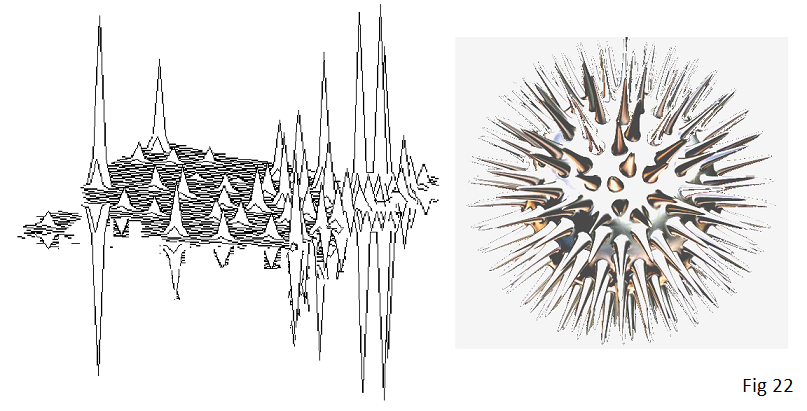
The big bang is now more clearly seen as a "bounce" through the torus and inflation as the consequence of negative-South-side entropy working its way through. I suspect that the maths for inflation could prove to be similar but the metaphor attributed to it different.
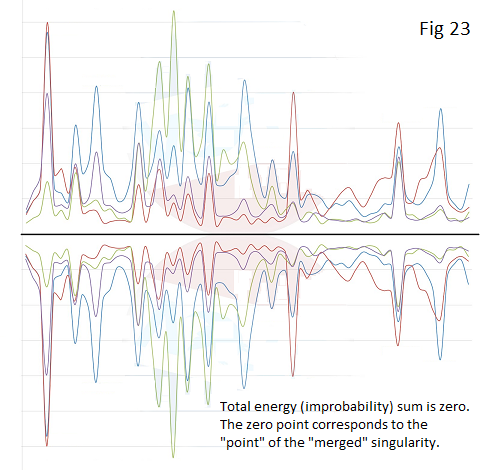
All this is still awkward and embryonic in conception: it will change or even be abandoned where I realise it really is nonsense.
One advantage of the idea that the inner and outer universe (perspective reversed for each member universe) pivots around the "electron shell" diameter is that, in sine wave fashion, flows through the pivot point reach a maximum for the most common wavelength (very long) and, so, they enter towards the pivot at the SoL and emerge at the SoL. So any device checking the SoL will see it as a maximum constant. We tend to think of it as a flow past us whereas it may be a flow into and out of us (us being our constituent atoms).
Points to be integrated into the text later:
The view I am developing is this: for photons, time is pretty meaningless. They just "are". Like the "wavefunction" they have a ubiquitous presence that permeates throughout all of space with "no respect" for time or distance. For them, the distance across the universe is miniscule, there is no "passage of time" for them. In deep intergalactic space, they are the dominating presence. In deep intergalactic space they sum up to zero energy through interference. It is only when matter evolves through chance high energy accumulations (highly improbability concentrations that "derive" from the fundamental uncertainty principle) that time and persistence appear to become important. Time is "crafted" out of deeper and deeper wells of "a progressive slowing of the passage of time". However, this time is in a perfect balance of matter wells and antimatter wells. The reason that they do not annihilate (remember the matter capacitor) is that these time/matter wells lead to larger and larger half-lives of the particles concerned. At the statistical "mean" that separates matter from antimatter (-ve atom shell entropy from +ve atom shell entropy) there is an inversion of "perspective". The atomic nucleus is a manifestation of our "view" of the reciprocal antimatter universe contained within the electron shells of matter (and vice versa). Time is a manifestation of "how far" things are away from each other, within the nucleus, from the antimatter-side perspective. The view from the antimatter side is that the distances of a positron-entropy dominated universe are huge but from an electron-entropy dominated universe they appear to be contained within a nucleus. How is this possible? Well, that earlier argument, that the passage time "slows" massively at an event horizon, comes to the rescue. The distance, from the event horizon of our galaxy's black hole to the event horizon of the assumed "big bang", should be much, much smaller (infinitessimally?) at the event horizon, than the 13.7 BnLY that we perceive from our perspective in the proximity of Mother Earth. General relativity seems to permit some sort of wormhole (time portal). All matter is a balanced condensation of electron-positron-pair derived improbabilities that form condensing time-slowing wells in an otherwise timeless photonic universe. Partial time wormholes are probably a manifestation of every atom in the universe, and they "join up" linking atoms to rocks to asteroids to planets to suns to galaxies and to event horizons till all "project" back to one "virtual(?) big bang event". This big bang "event" will be very different to the popular "unimaginably big explosion" interpretation. Within the "wormhole" created within electron (or positron) foci, the transition from a 2-D enveloping membrane to a 3-D (or more) "universe within a nucleus" (which, of course, is a perspective that is completely inverted for a positron dominated universe) results in apparently different physical properties of the balancing positronic shells "within" the nucleus of an atom. (This could, perhaps, work but I can't imagine exactly how at the moment.) However, this "immediate" intra-nuclear structure is a property of the "wormhole" between matter and anti-matter dominated universes. Every atom in our bodies is, through its own "electron-shell-enclosed-wormhole" incredibly "close" (that is, it is in high capacitance with) its antimatter mirror. The "structures in both decay (half-lives again – a consequence of the time-well) but one through matter domination, via photons and progressive red shifts, to deep intergalactic space and the other, at the other end of the (toroid?) wormhole, through antimatter domination, via photons and progressive red shifts, to the same deep intergalactic space. At this point they "meet" and sum up to absolutely "zero". It is the creation of condensing "time-wells" that allows the "progressive" evolution (emergence) of an apparent event as unimaginably improbable as the (virtual) "big bang". This general view has, possibly, some merits that may commend pursuit and refinement.